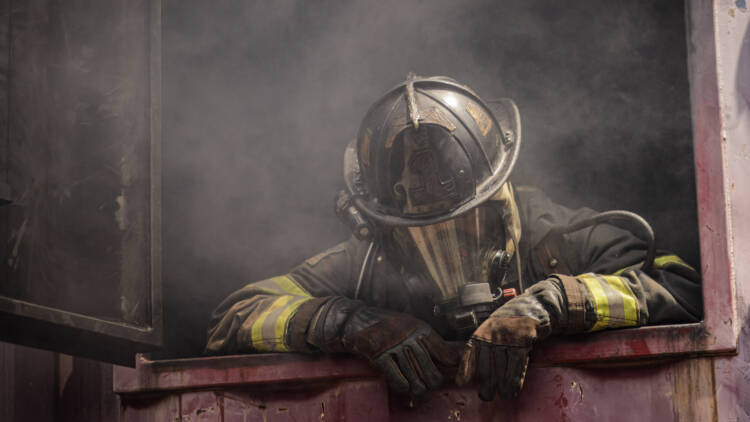Since its humble beginnings 200 years ago in canvas, leather and linen, modern firefighting hose continues to improve thanks to fellow hose nerds brainstorming new technology and testing.
In 2016-17, Mercedes Textiles helped testing pros at Underwriters Laboratories (UL) and Intertek forge new heat testing requirements for fire hoses. This testing requirement was included in the NFPA 1961 per UL 19 — mandatory as of March 2021. We're proud to have participated in this process, with your safety as the end goal.
The updated NFPA conductive heat test and the new radiant heat test were developed to help firefighters better understand the thermal resistance characteristics of their hose and what type of performance they can expect once the hose is compromised.
the how, What, and Why of the Radiant heat test
The new radiant heat test involves two steps using specific setups and carefully calibrated instruments. First, the fire hose is exposed to a radiant heat source while at a static 150 PSI. The test measures the time until the hose loses 20 PSI — until the heat has affected the jacket integrity. Now we need to know the degree to which the damaged affects the hose performance.
Next, the dynamic flow test measures the leakage while again pressurized to 150 PSI — the most relevant datapoint to delivery performance and safety. Watch the video below for all the details.
This two-step test – measuring both time to loss of pressure "failure" and GPM loss to show type of "failure" – was designed to add one more piece of information to consider when designing & purchasing an attack package along side things like friction loss, packability, charged weight, ID, etc.
It is left up to the end user to decide if thermal resistance and performance is important to them in an attack hose, and if so, how much. It should be noted that this test is NOT pass/fail.
CAN WE BEAT THE HEAT?
We don't need to tell you the kind of conditions hoses face on the fireground. Those of you on the line know how vital keeping water on the fire is for everyone's safety. And that's what matters to us.
Our KrakenEXO® was among the first tested to the new standard, showing superior performance after extreme heat exposure. Instead of simply heating to catastrophic failure, our Mertex-lined hose produced self-protecting pinholes — weeping water that in turn prevented further hose damage.
So while our hose may clock out of the first half of the test early, the impact to your hose performance is negligible at a max of only .05 GPM. Not half a gallon – .05 of a gallon. Moreover, that weeping water protects the line from further damage. With minimal pressure and flow loss, the KrakenEXO® remains fully capable of fighting fire.
See the complete KrakenEXO results here.
REAL CASE STUDY FROM THE FIREGROUND
In April 2022, Groton Fire Department (MA) abandoned their first-in KrakenEXO® line prior to roof collapse and left it charged until the fire was out. Being under our 2-year All Hazards warranty, they sent it back to be replaced. We took the opportunity to test how our hose held up in the real world. Here are the results.

